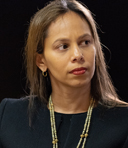Sustainability and blockchain feature in funding innovation
Green and sustainable debt should become even more prominent in the major-bank funding mix, the big four say. This is not the only funding innovation catching the eye, either.
ROBB Commonwealth Bank of Australia has a strong commitment to respond to the challenge of climate change and is active in low-carbon financing to support our transition to zero emissions by 2050. In the sustainable-issuance market, we are focused on a rigorous approach to socially responsible investment asset classification. The transaction we did last year was, at A$650 million (US$481.1 million), the largest green bank deal in Australia and was accredited by Climate Bonds Initiative.
We have communicated to investors that we want a robust, sustainable green asset class. The management task around assets is not inconsiderable as a result. In addition to identifying eligible assets, this involves ongoing monitoring and reporting as well as validating and separately auditing those assets. The feedback we have received, especially from the international investor community, is that this approach has long-term value.
KAU It’s right to describe this as a developing space, and as market participants become more aware of environmental and social concerns it will get bigger both from an asset perspective and on the bond-market inflow side. We will meet the demand from investors, because it naturally makes sense to match the two sides of the balance sheet.
What would be really positive is if the liability side becomes significant enough that investors start to take an absolute economic interest in the assets – for instance via securitisation or covered bonds. There is some way to go, but it would make a real difference.
We have to listen to what investors want and not have preconceived ideas about things like issuance formats. But at the end of the day, as we add assets to the balance sheet it makes sense for the liability side also to have a voice.
ZILELI We support financing the transition to a low-carbon economy, we have issued a significant volume of green bonds and we will continue to do so. We have also developed a social-bond framework and have issued once from this platform. We would like to develop this framework further.
We recently updated our green-bond framework to a UN sustainable-development goals (SDG) green-bond framework. This means we will diverge somewhat in the sense of having an SDG green and an SDG social framework.
We have issued in euros, Australian and US dollars, and in securitised formats. We are driven by the assets the bank writes and we are also looking at what else we can use as reference assets. It’s an ongoing process, especially on the reporting side.
BISCHOFF Westpac Banking Corporation initially focused its efforts on green bonds, which related to some of the points that have already been made – specifically that the industry is developing and we wanted to make sure the product we were putting in front of the market was in line with accepted formats, with robust reporting and assessment standards.
We have made commitments as an organisation to meeting a range of targets by 2020, and these cover both the lending and issuance sides. We have recently made a new hire in treasury, who will be responsible for the sustainable-issuance programme on a full-time basis.
Like National Australia Bank, we are currently working on developing our framework to give additional flexibility around social and SDGs as well as green. This is a path followed by a number of our international peers, too.
As banks, we have a responsibility to drive this market but also to be conscious of how quickly it is evolving. Things are changing all the time, and we don’t want to commit ourselves to something that will become redundant in future.
ROBB This is a broader project from our institutional banking and markets unit, rather than an issuer project, but certainly something we are watching with interest.
I’m sure we all share some of the frustrations with the status quo when it comes to execution, so it’s encouraging to hear that blockchain is gradually delivering on some of its potential and starting to be applied in real money markets.
I’m sure it’s something we will all be interested in. It’s early days of course, but I think it’s an exciting development.







